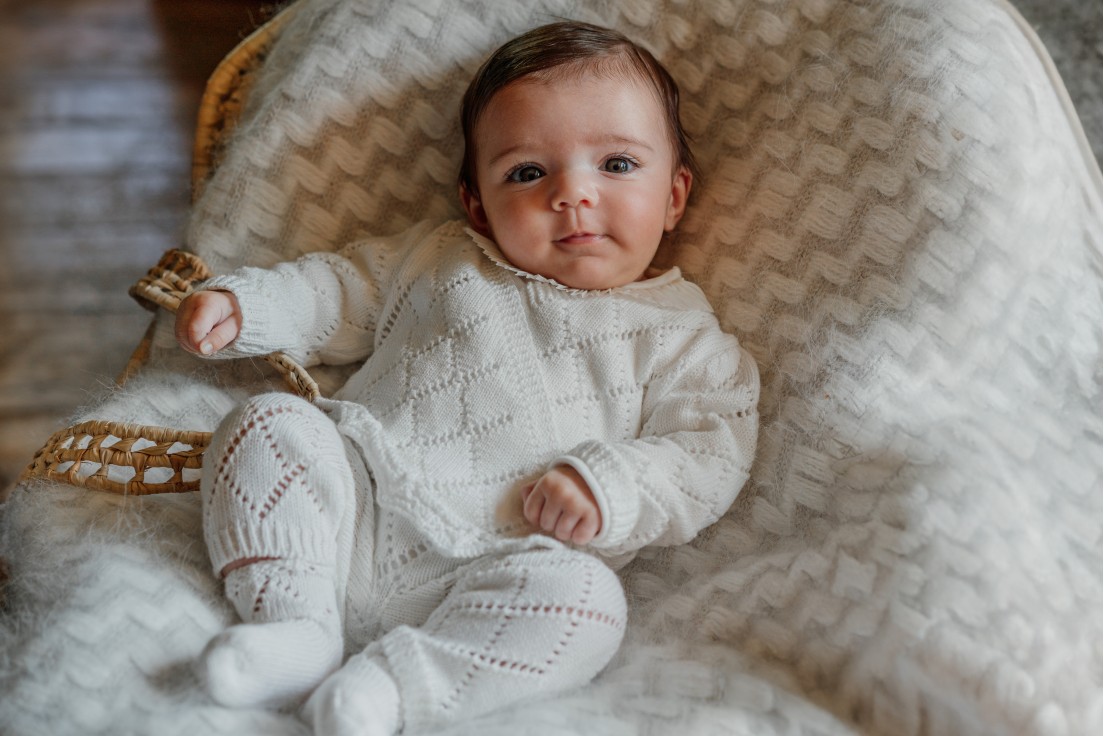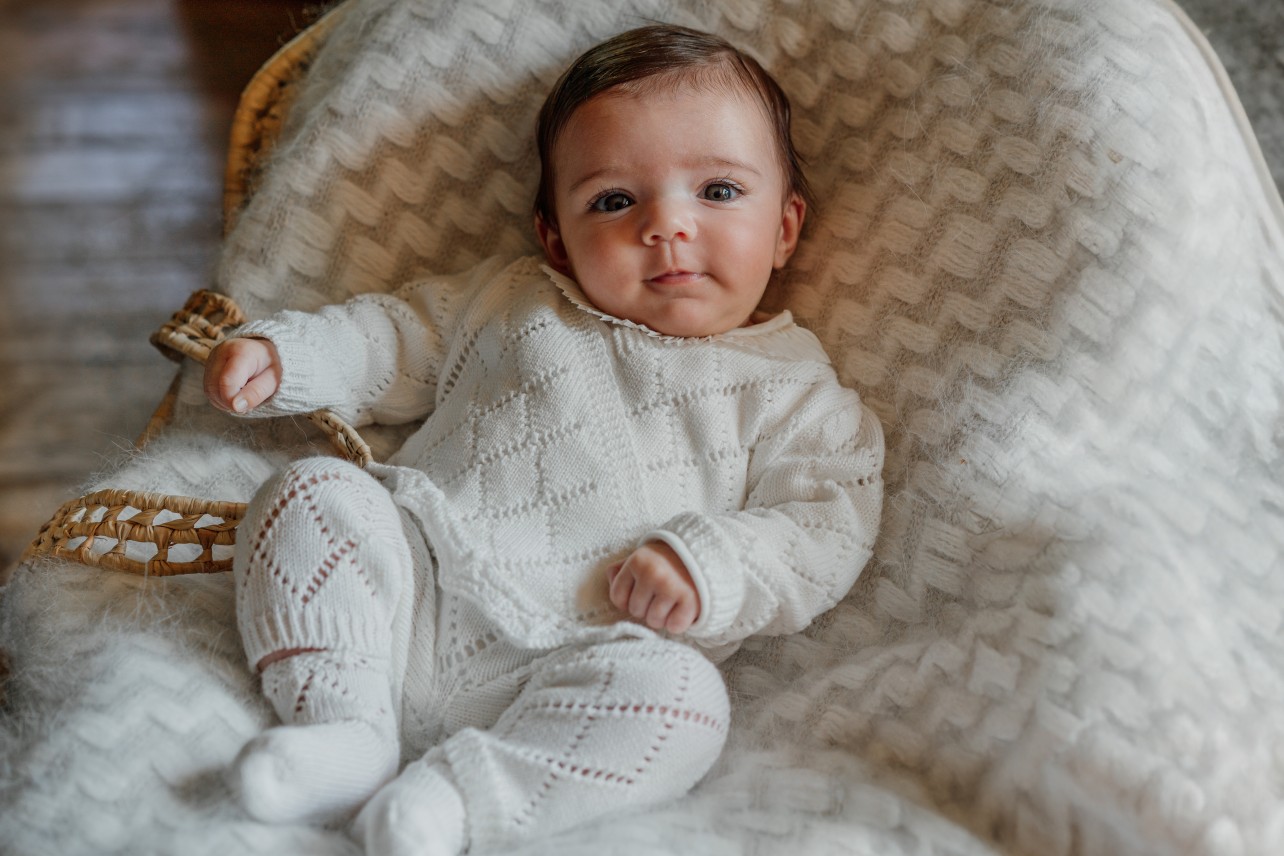Our baby's hygiene is a concern from the first second they are born. Many precautions are taken and respected in favour of the little one's safety and so that they grow and develop in the best possible way.
Like other aspects such as feeding, hygiene care for babies should be considered crucial because of its influence on children's health and well-being.
We all know that bath time can be viewed with some uncertainty, especially when we're experiencing it for the first time. As well as having all the products recommended and suitable for our baby's skin and all the fundamental elements for this moment, something we don't have as much control over at bath time and that we look forward to with great anticipation is our little one's reaction. Will he or she like it, will it not be such a pleasant experience or even if we parents are so nervous that we don't relax and enjoy this moment with our babies.
It's perfectly normal. It's a moment that we won't be comfortable with until we start doing it regularly and realise how much fun bath time can be for them and for us.
Today we wanted to focus on this topic for newborns. We believe that bathing a newborn for the first time can be, on one hand, an intense and exhausting experience and, on the other hand, a moment that parents will never forget and will be a memory they can later remember and share with their son or daughter.
When we think of a newborn baby, we automatically think of a very small and fragile being who requires the greatest possible care. Bathtime is one of those experiences that should be given twice as much care. So we wanted to understand what kind of care we're talking about and how we can turn bath time into a safe and loving bonding moment.
As always, we did our research and found out some tips on bathing, factors such as water temperature and other processes that make all the difference when it comes to bathing our little ones.
You're ready to take notes, so here goes:
- They recommend bathing two or three times a week, which is enough to keep the newborn clean;
- If it's an important and bonding moment that parents and baby enjoy, bath time can be daily;
- Bathtime should always be carried out under supervision and attention;
- We should choose to bath at a time when the baby is happy and not too sleepy;
- The room must be cosy and warm for when the little one gets out of the bath;
- There should be a lot of preparation beforehand and for this you will need: a clean nappy, a clean bath or basin for the baby, clean towels, a basin of cooled boiled water, a clean set of clothes, a bath thermometer and some cotton wool;
- It is recommended that you add water to the baby's bathtub until it reaches a depth of around 8-10cm, adding a little cold water first and then hot water and not forgetting to stir and mix the water so that no hot spots appear;
- The use of a thermometer is essential to check the condition of the water, which should not exceed 38ºC;
- Doing a final water test is important to make sure the water is ready for the baby;
- We should only leave the nappy on the baby and wrap it in a towel while the face and eyes are washed;
- Small pieces of cotton wool should be used to wipe the inside of the eye outwards and only once;
- To wash the head, we should hold the baby so that its head is over the bath water and can be rinsed thoroughly, then promptly dried;
- When removing the nappy, we should clean off any dirt that the baby may have;
- Our hands should be clean and free of rings and bracelets;
- We should carefully lower the baby into the bath, using one hand to hold the upper arm and support the head and shoulders;
- Throughout the bathing process, we should hold our little one firmly and carefully, and it is recommended that we place one hand on their back and hold them under the arm, with their wrist or forearm supporting their head. This way, we'll have one hand free to wash the baby;
- Keep the baby's head away from the water and run warm water over the body;
- If there is vernix (the white greasy layer) in the small folds, this is normal and helps the skin barrier to develop over time;
- When the baby gets out of the bath, we should take him out with one hand behind his back and the other under his arm. The wrist of the forearm should support the baby's head. Take care that the baby doesn't slip;
- After getting out of the bath, the baby should be wrapped in a towel, not forgetting the head. Then dry every little fold and put on the nappy;
- Once the nappy is on, it might be a good time to give your baby a little massage to help them sleep better and relax. In the first month we shouldn't use lotions or oils on the baby. However, we advise you to consult your doctor;
- A good idea, if your little one is scared by the experience, is to take a bath with them. You just have to make sure you have everything you need within easy reach and someone to help you in and out of the bath. It will be a great opportunity to help your baby get used to the water and it will be a moment to remember later with your little one.
We realise it's quite a long list, with lots of tips to point out. However, we've listed everything here so that you can always consult it and put some of these suggestions into practice.
We really believe that it can be a double-edged experience. Scary because you don't know how to behave or how your little one will react. An incredible experience, because it will be an opportunity to develop an even greater bond with our little one.
As far as we're concerned, it will be a great experience and everything will be fine. Throughout the tips we've found, we've linked some items that we have available related to towels and some accessories that we think are essential for the care and hygiene of little ones.
What about you? How was your first bath experience? In your case, what practices did you use? What aspects became clear to you at bath time? We want to know your experience. We want to know your opinion.






